What to plant when: monthly guide to beds, borders and pots
Plan your planting month by month by knowing what to plant when in 2022 for 12 months of color and interest

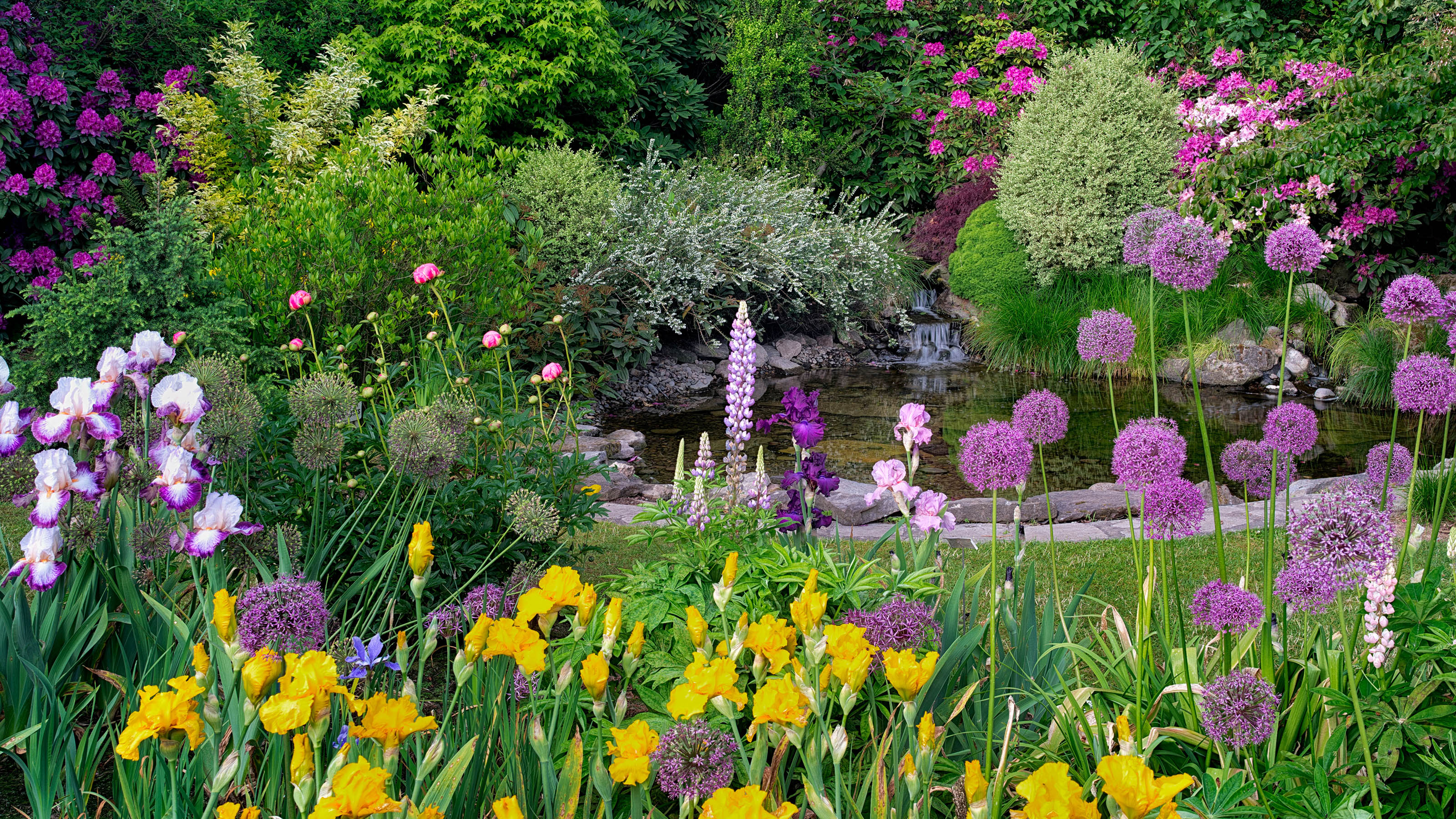
Knowing what to plant when will ensure your dreams of a garden which is brimming with color can become a reality. To guarantee great results, first ensure you have a good framework of evergreen interest which can be added to with an array of seasonal beauties at different times of year.
When you sit down to plan a year long succession of color and interest the first battle is to find the right plant for the right place. Pick reliable varieties which will be happy in your garden before you go shopping. Ask yourself: do I need plants for sun or shade? For clay or sandy soil? Do some research and compile a list.
When you buy from garden centers or online, plants often come as plugs, they’re great value and grow quickly in one season, catching up with larger, pricier ones in no time.
Growing plants from seed ise of course the most budget-friendly option for boosting your flowerbed ideas, however the trade off is that this requires more time, care and planning what to plant when to get the results you want.
Follow our advice on what to plant when for seasonal color in the garden
No matter the conditions of your garden, you can enjoy sowing and growing plants in every month of the year. Whether you're looking for options for garden borders or want to add stunning seasonal color to your container gardening ideas, there is plenty of inspiration in our guide on what to plant when.
January
Beds and borders
Create a sensory overload this month by seeking out the best winter flowering shrubs. Most have small flowers tough enough to withstand bad weather, and are usually highly scented to attract pollinators. Daphnes are a must-have, particularly D. mezereum, which has a neat habit and is perfect for the smaller garden at 3ft (1m) tall. Clusters of sugar-pink flowers appear on the tips of bare stems from late winter through to spring.
Wendy Humphries, Amateur Gardening expert is a fan of the good old common snowdrop which provides nectar for bees in January. 'If planted en masse, snowdrops really pack a punch when breaking through frosted leaf litter or snow under trees and shrubs. Snowdrops are excellent for naturalising in the lawn, but they’ll also grow happily in patio pots, producing flowers that will dance on even the coldest of breezes.'
Containers
When it’s too cold to venture outside, why not create an eye-catching feature to improve your view with the best winter garden plants. Cyclamen persicum are one of the best plants for winter hanging baskets, indoors or out.
Bring life to pots and containers with the best winter plants for pots such as violas and pansies, stalwarts for winter when there’s little else in flower. Combine with low maintenance shrubs for when the flowers die back.
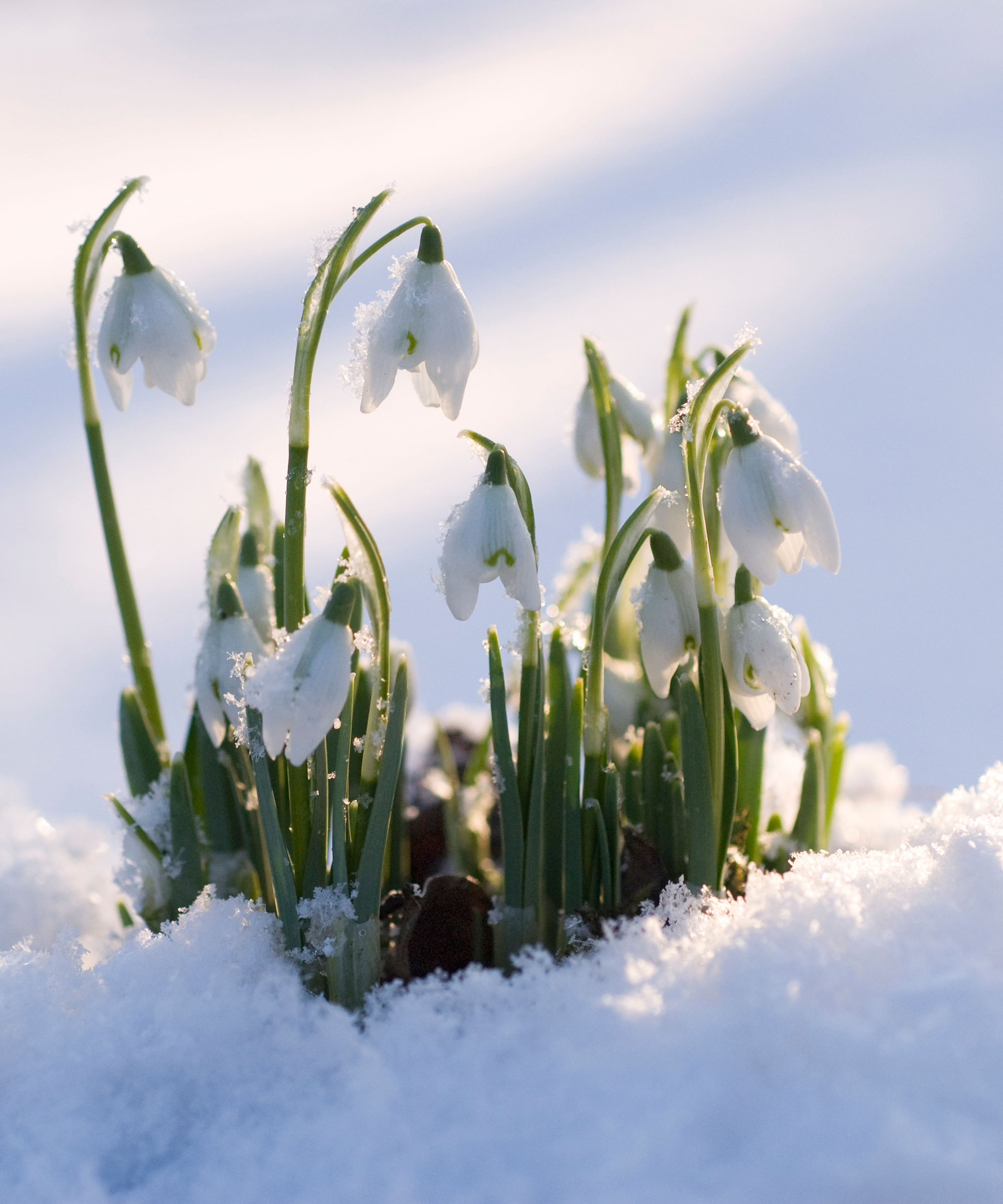
February
Beds and borders
One idea for how to plant daffodils (which will be springing up this month) is that they look good in drifts along the edge of borders. Planted in autumn, daffodil bulbs spend several months developing roots before the flowers burst forth in early spring.
Winter jasmine still looks wonderful this month when trained over a porch or allowed to ramble over a garden wall. Plant in sun or semi-shade. Some viburnum will be flowering now like Viburnum x bodnantense ‘Dawn’, a lovely type of viburnum which produces candyfloss-like clusters. Grow in a large pot of well-drained compost and keep it moist.
Containers
Line up pots of Primula auricula in a covered shelf ‘theatre’. Small and easy to grow, these plants are great in limited space. Gradually increase watering and apply a weak solution of all-purpose feed from January.
For color and fragrance, ready-potted and growing bulbs are in garden centers, such as Winter Iris reticulata, Iris danfordiae and hyacinths ‘Delft Blue’ and ‘L’Innocence’.
Narcissus ‘February Gold’ is a fabulous early flowering daffodil that has short stems and dainty golden yellow flowers with swept-back petals. An idea for adding color and interest to pots and window box ideas from February.
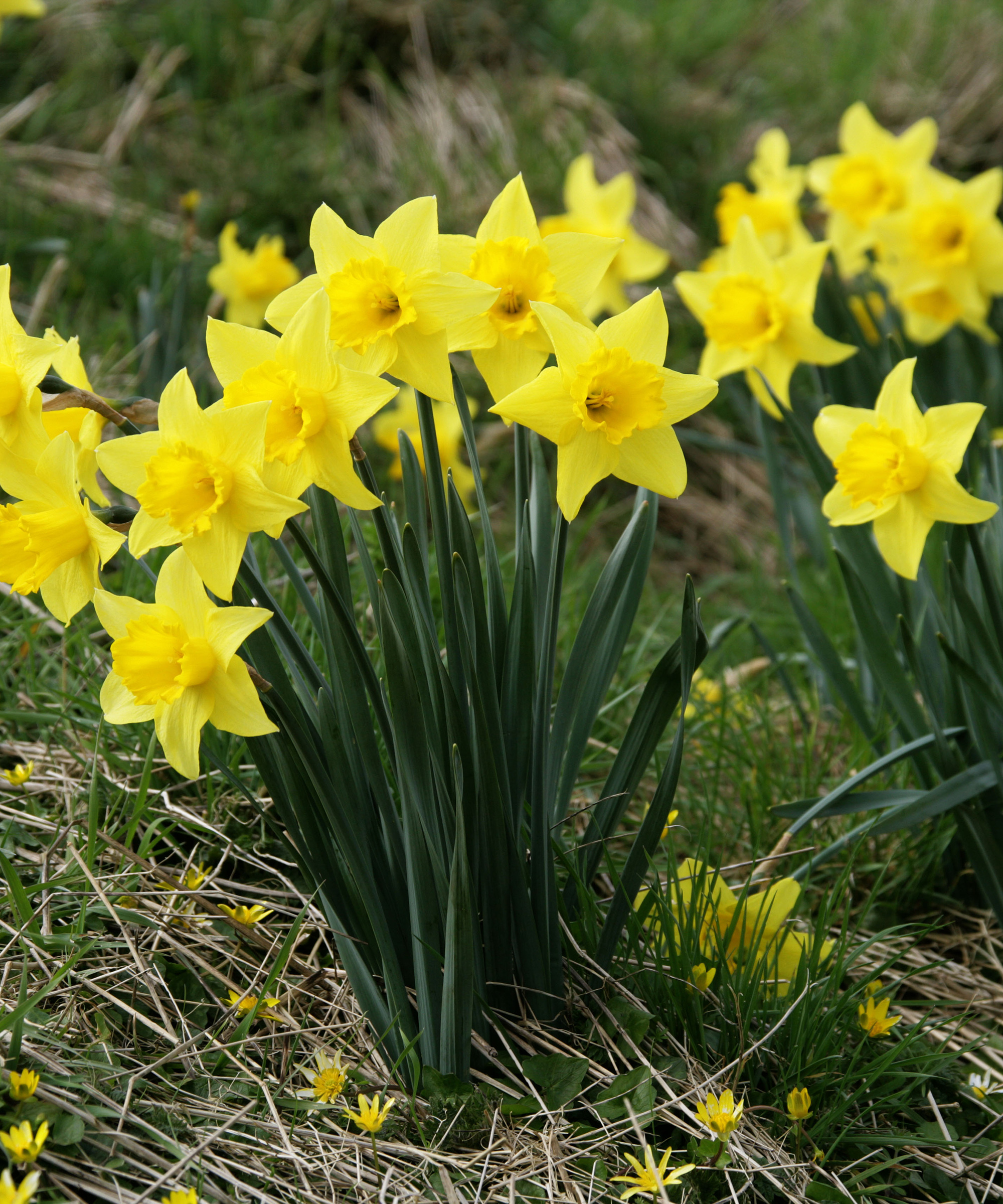
March
Beds and borders
Now is the time to sow hardy annuals such as sweet peas, nasturtiums, nigella, calendula and cornflower, in pots or where they are to flower. More tender annual climbers can be started in a propagator, not only are these plants quick-growing, they’re easy and cheap to do from seed.
Most have tendrils or a twining habit and quickly scale a support or scramble through a shrub. Why not try the cup and saucer vine (cobaea); Spanish flag (Mina lobata); morning glory (ipomoea); Black-eyed Susan (thunbergia); and climbing snapdragon (asarina).
Containers
This time of year is the perfect time to plant up some containers and there’s plenty of hardy plants that will stand up to the inevitable frosts that will come over the next few weeks. To give the display staying power choose an upright, flowering shrub as a centerpiece and pop in some foliage plants such as euphorbia and trailing ivy.
Instead of planting bulbs for spring in autumn, you can buy pots of ready-grown bulbs and edge the container with primulas, violas or pansies. For impact, choose complementary flowers that are opposites on the colour wheel - such as yellow and violet or blue and orange.
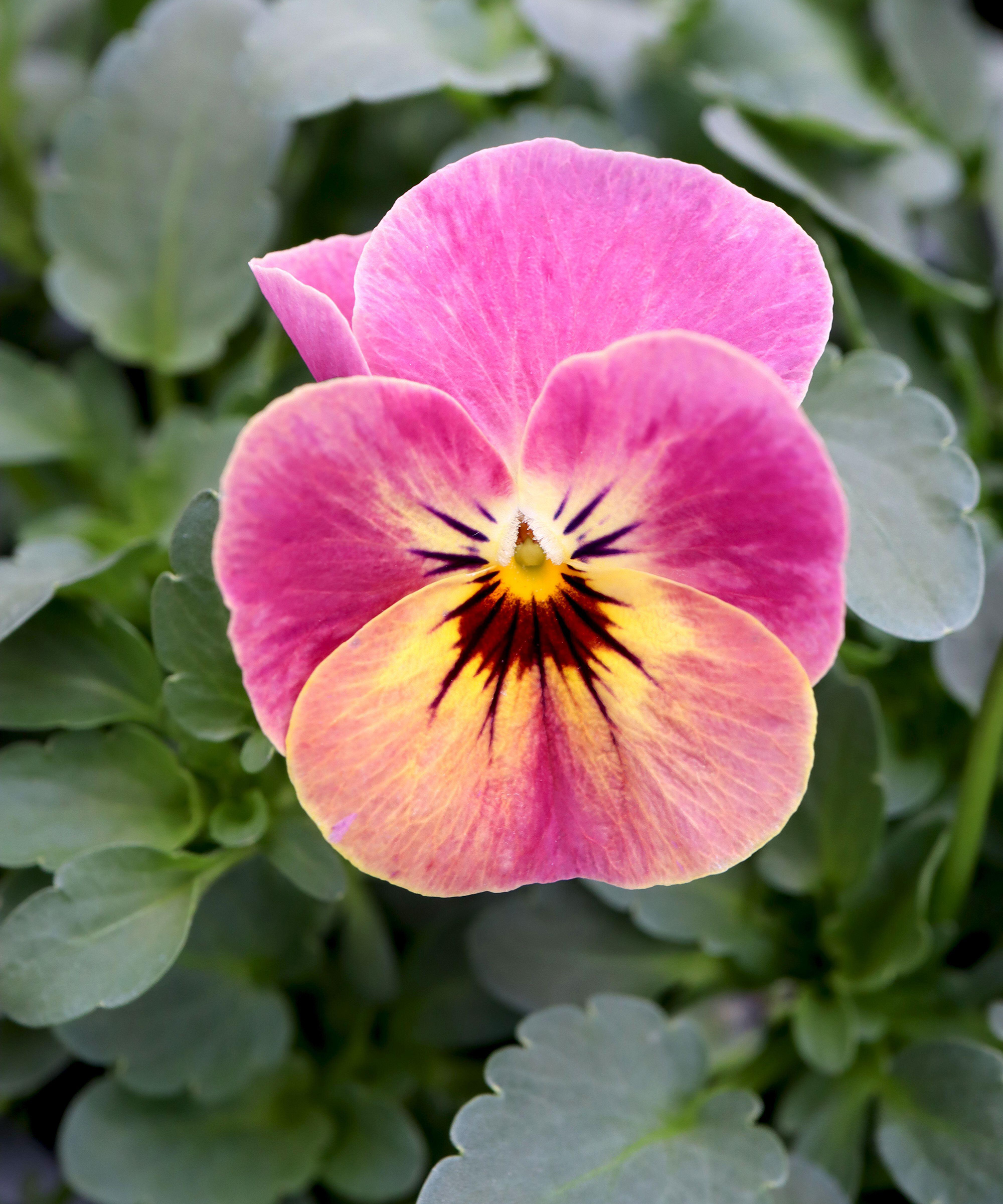
April
Beds and borders
Make getting your summer bulbs in the ground this month part of your spring garden jobs if you haven’t already. For instant color get other bedding plants into gaps in your borders. Pansies appreciate moist but well drained soil in sun or partial shade. Buy in plug plants this month.
Now is the time to divide up perennials, including shade loving plants like hostas, giving you more plants for the garden. Cut back the old shoots on penstemons to the base as long as there is new growth at the bottom of the plant.
Sow sweet peas directly in the ground or plant out pot grown seedlings and build wigwams of canes to support them and tie in the shoots as they grow.
Sprinkle cosmos seeds in any gaps for an array of blooms in summer. They will make lovely cutting garden flowers too.
Containers
Refresh the compost in your pots and repot any plants that have outgrown their containers and are pot bound. Create a spring display with pots of daffodils, hyacinths and tulips.
Buy ready-grown daffodils and hyacinths from garden centres, or if you planted certain types of tulips in autumn they will flower this month.
Leave foliage of daffodils and tulips to die back naturally to help feed the bulbs for the following year or remove bulbs from pots once the foliage turns yellow. Leave to dry and store in tights or paper bags until autumn when they can be planted again.
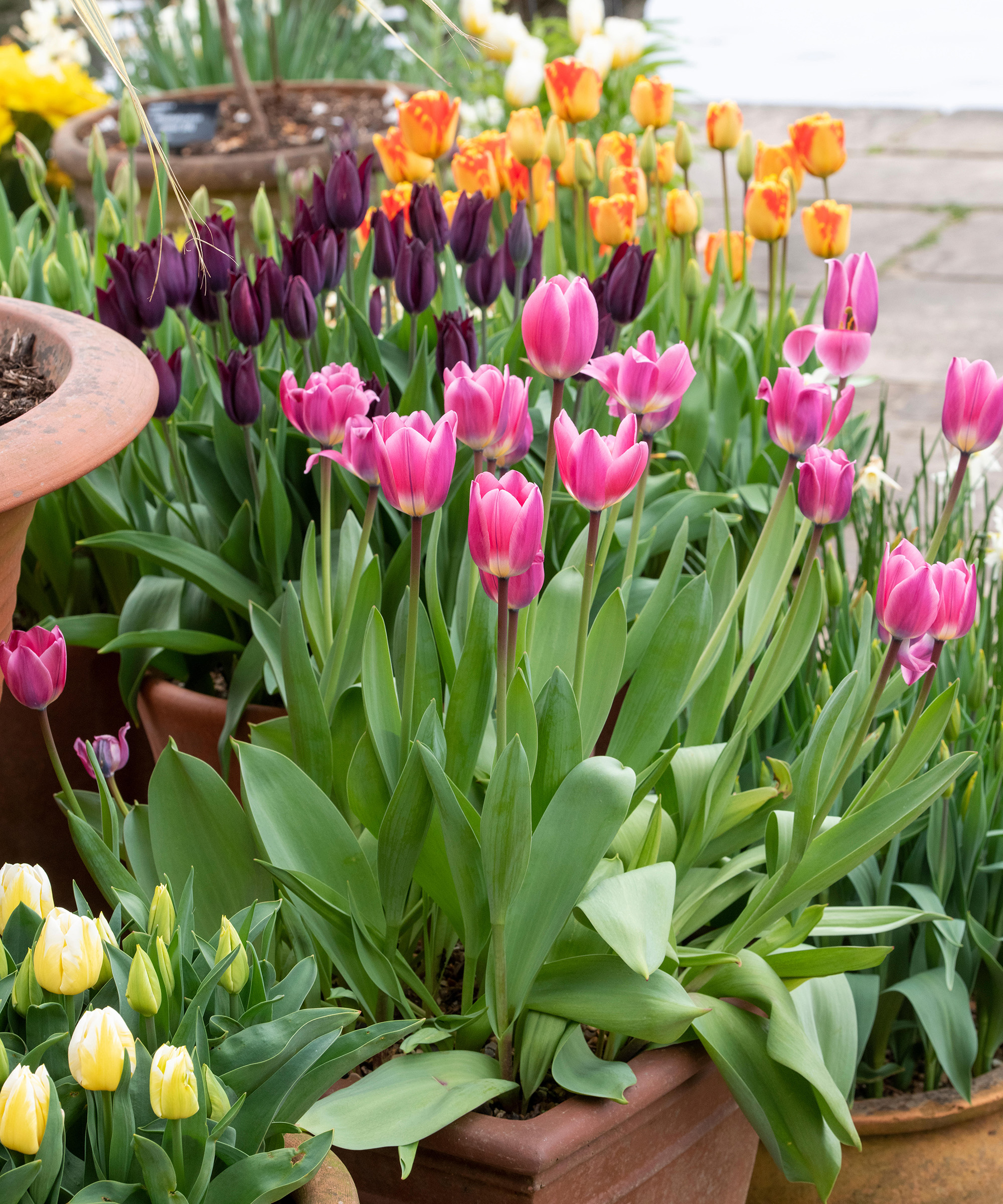
May
Beds and borders
Once the risk of frost has passed you can harden off canna lilies and dahlias before planting out. Plant out pot grown foxgloves which flower from May to July. The towering blooms of tubular flowers are iconic for adding to cottage garden ideas. Bees love to feast on their nectar and after flowering they will die back before fresh growth appears the following spring.
If you're keen on learning how to grow geraniums, a fast growing variety is Geranium x oxonianum 'Wargrave Pink', which is great for filling borders and has a long flowering period from May to October. Alliums are strong growers and in May they produce tall stems topped with large globular mid-purple shiny heads that hold up well to wind and rain. They are also excellent for cutting.
Containers
Adding a slow release fertilizer and water storing crystals is key to keep plants in your window boxes and hanging basket ideas in top condition throughout summer. Pot up begonias for a long lasting display and keep well watered in a bright warm spot and feed during the growing season with a balanced liquid fertiliser.
Hanging baskets or pots filled with lobelia and petunias will also add instant color, especially for patio areas. Team with trailing plants like ivy to add interest. If you have the space, growing bedding plants from seed in a greenhouse from February to April will give you a steady stream of flowers throughout the summer. As with all summer bedding plants, don't plant out until all risk of frost has passed.
For towering yellow blooms, which are a summer favorite, learn how to grow sunflowers by sowing seeds in individual pots now for planting outdoors in summer.
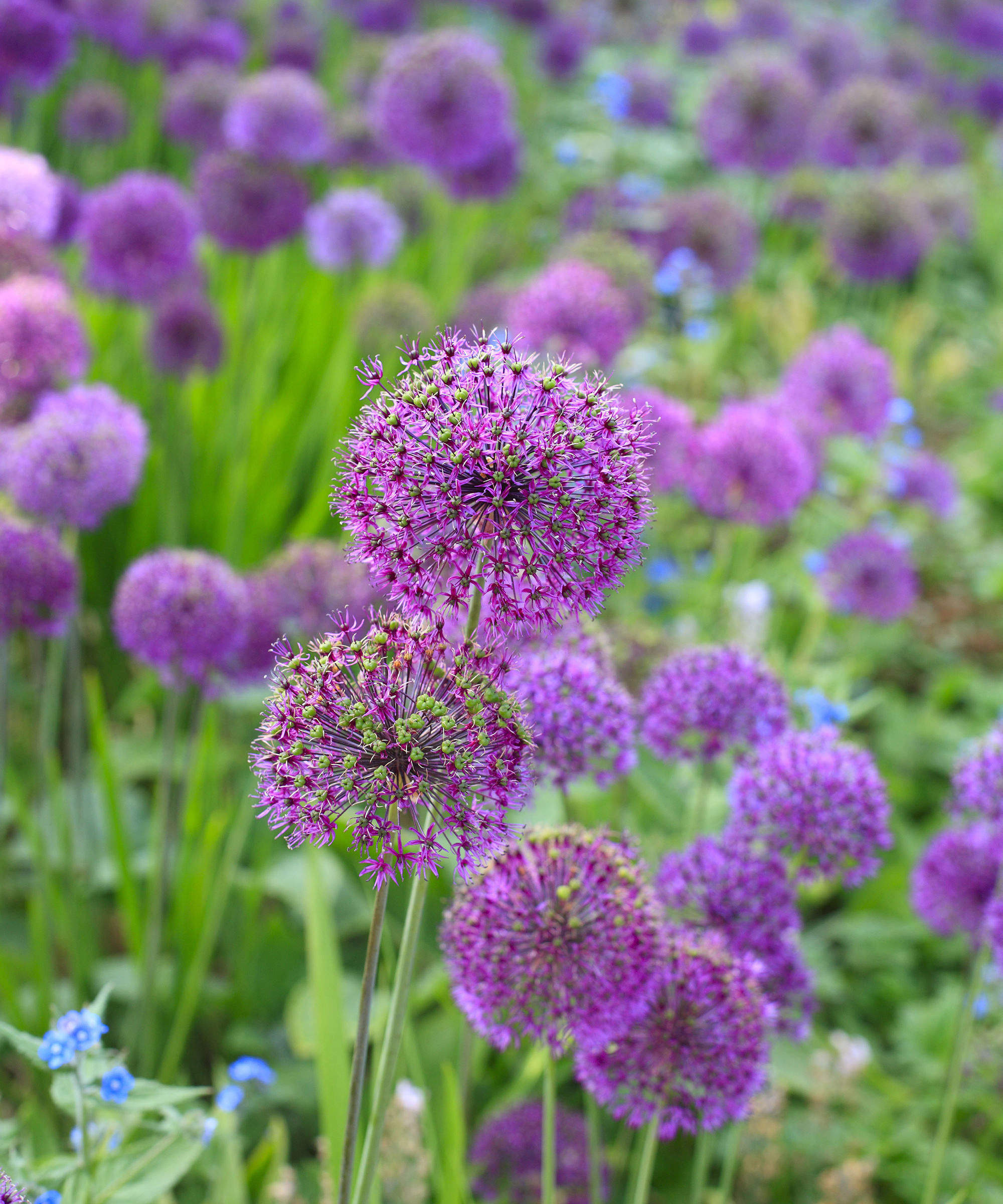
June
Beds and borders
It’s around now that you will see any obvious gaps in borders, so take a trip to a nursery and take your pick from the perennials on offer. Try astrantia, bearded iris and hardy geraniums and the bees will thank you. Planting groups of the same plant dotted along a border is a good way to lead the eye.
As well as planting, a daily potter to deadhead, tie-in wayward stems and pull weeds is very therapeutic. Forget-me-nots can be cleared, but bulb foliage must be left for six weeks. Continue to stake top-heavy perennials with practical climbing plant support ideas in case of strong winds, and water your borders thoroughly once a week rather than giving frequent drizzles. Sow nasturtium seeds in your veg patch as they make the best companion plants for broccoli and runner beans.
It’s foxglove season, and spires of bell-flowers that are adored by bumble bees dominate this month. For something more unusual try ‘Illumination Pink’ or ‘Firebird’, the latter produces gorgeous coppery pink flowers into fall and are traditionally thought of as one of the best cottage garden plants.
Containers
You should be able to find flowering varieties of Echinacea purpurea right now in garden centres or online. Their flowering season is June to September and planting it with a swathe of different types of ornamental grass will prolong its interest.
Hydrangeas and hostas are a good duo for pots as they can both cope with shade. You need to choose a pot that’s slightly bigger than the plants, to give them room to grow. Larger pots also take longer to dry out.
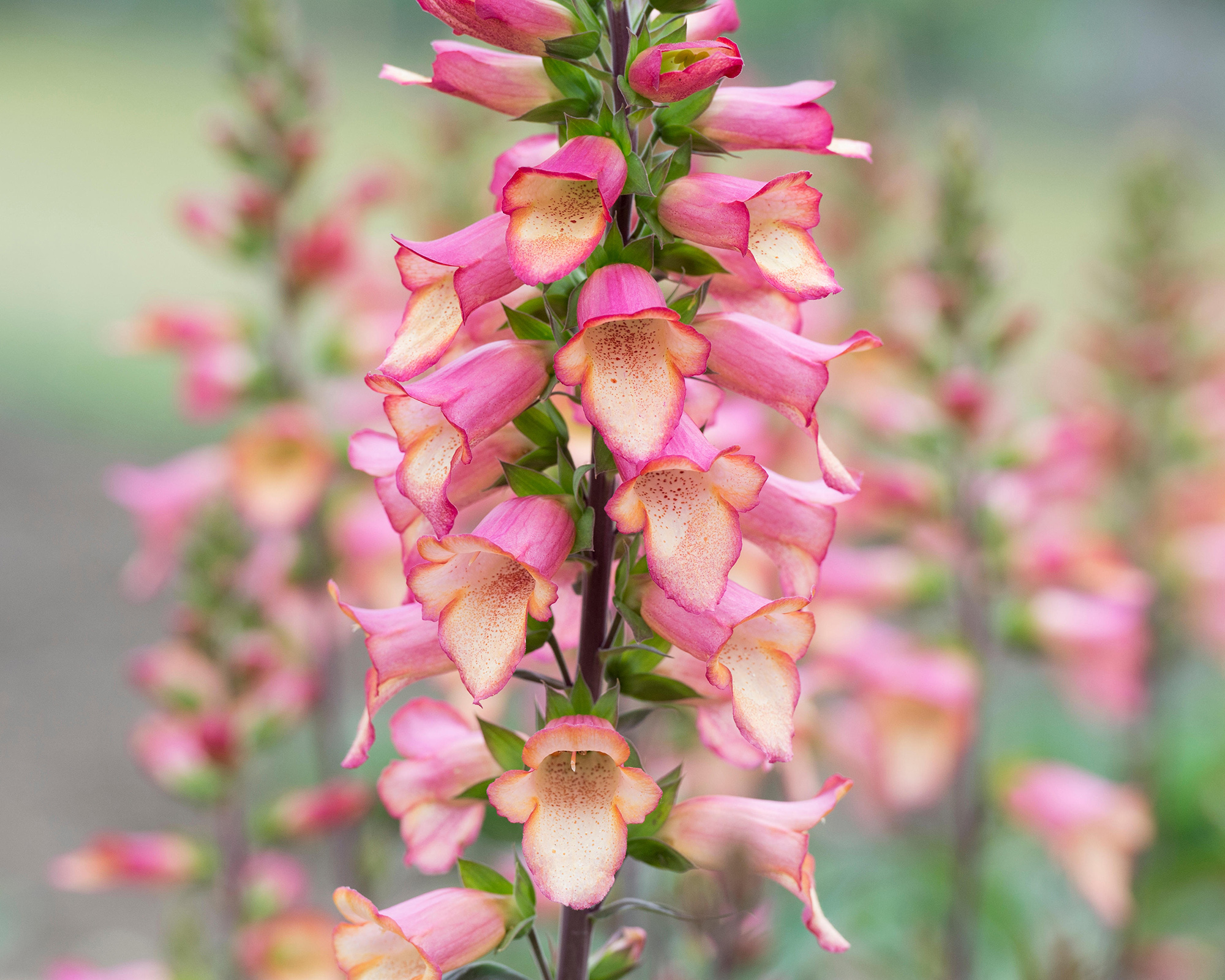
July
Beds and borders
Although July isn’t the ideal time to plant shrubs and perennials, especially if you’re going on holiday and will be unable to water them, you may be tempted by the beautiful blooms of some of our favorite suggestions for what to plant in July.
If you can’t resist and do plant now, consider installing one of the best self watering systems to make sure they survive. Also add a 5cm (2in) layer of homemade compost or shredded bark over damp soil after watering or a period of rain to trap the moisture in.
Deadheading perennials such as dahlias, hardy geraniums, salvias and Shasta daisies (Leucanthemum), as well as any annual bedding plants, will encourage them to reflower and prolong the show. Also remove the faded flowers on hebes, buddlejas and repeat-flowering roses, taking the stems down to a healthy bud or side-stem.
Pansy seeds can be sown now to give them time to come into bloom in autumn.
Containers
You’ll be spoiled for choice if you’re planting summer containers now. Fuchsias, pelargoniums, begonias, petunias and other bedding plants are all putting on their best shows, providing instant pops of color wherever they’re needed. However, they may start to flag as the month progresses and the food in the compost is used up, so apply a tomato or seaweed fertilizer once every fortnight to boost flower production and overall plant health.
Remember to deadhead every few days, too, and keep pots well-watered. If you’re off on holiday, group your pots together in a shady spot where evaporation rates are lower, and remove all the flowers before you go – you’ll hopefully return to find your plants in full bloom again.
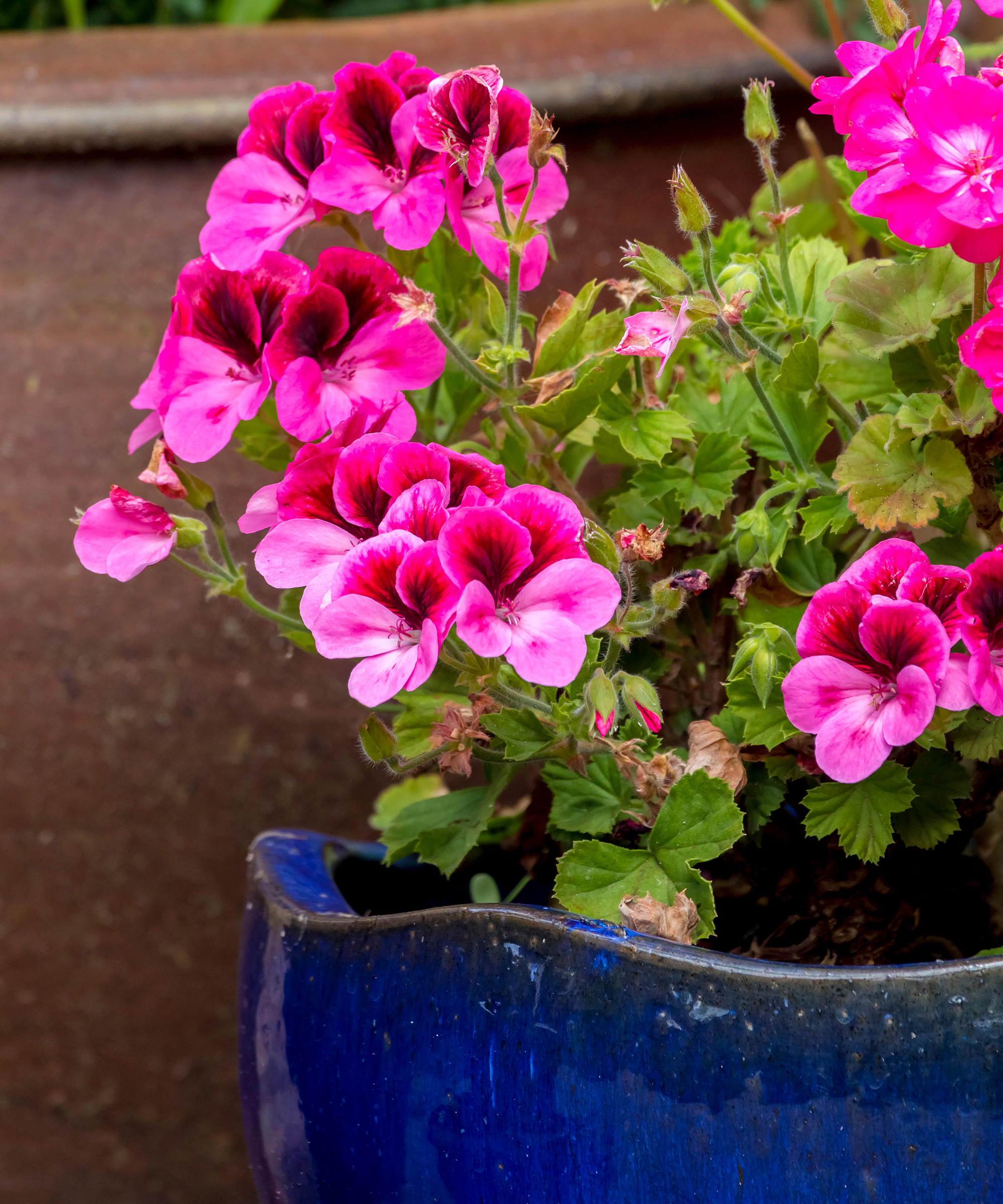
August
Beds and borders
It’s time for some TLC for shrubs. Water evergreen shrubs like camellias and rhododendrons thoroughly this month to make sure that next year's buds develop well. Pruning shrubs should happen this month including all summer flowering shrubs such as climbing hydrangeas as soon as they have finished flowering. After wisteria has finished flowering remove the whippy side shoots leaving about 20cm remaining.
It’s time to plant late-flowering clematis too for a color boost that lasts for months. Choose one from a garden center that’s just coming into flower, with plenty of buds still to open. The lush double flowers of Clematis 'Purpurea Plena Elegans' fit the bill for a splash of late autumn color. Another option for what to plant in August is a winter-flowering clematis like ‘Christmas Surprise’ or ‘Winter Beauty’, which burst into bloom in November and December.
Winter cyclamen seeds can be sown now but they won't flower until the following year.
Containers
Your summer garden planter ideas should be at their very best now but think about what to plant now to keep the color coming right into autumn. You may want to pull out any plants past their best and pop new ones in for a quick replacement job or alternatively start with a whole new container display.
Choose flowers like bold and bee-friendly echinacea and dahlias in burnished autumn shades and pair with bronze heuchera and a mix of ornamental grasses like rubra and panicum to add movement to your display. All of these can be transferred to the garden once they’ve finished flowering as they’re perennials.
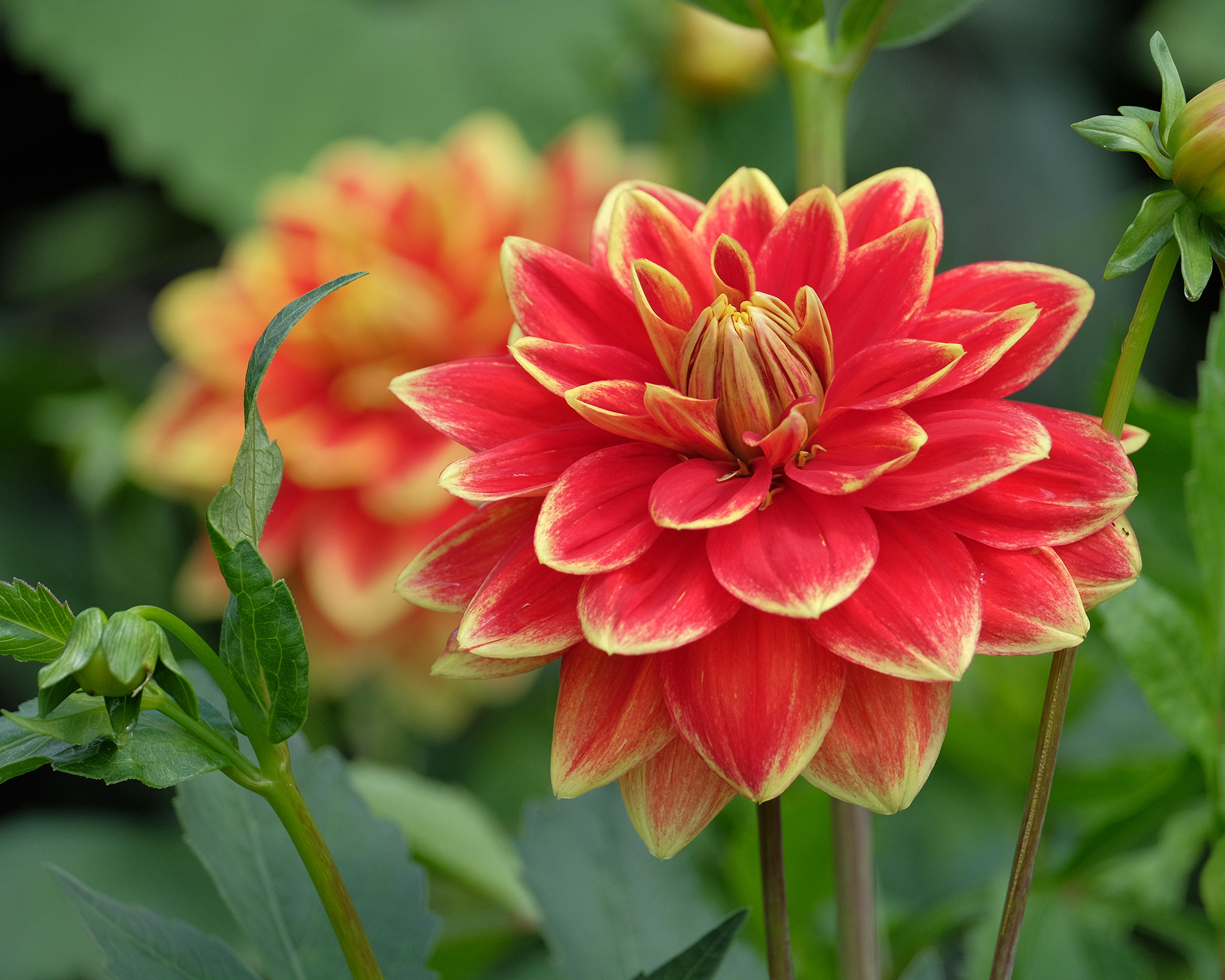
September
Beds and borders
The shops are now full of beautiful bedding plants in every color. So if you’ve gaps in your flowerbeds, go for something like the bright and breezy calendula which need little care and will flower until October with no need for deadheading.
Cosmos are prolific flowers which will bring your beds and borders to life with pink blooms with feathery foliage that need little care and will bring instant cheer. They will keep flowering until the frosts come.
Looking for more ideas for what to plant in September? Seeds to sow now include golden marigolds and spring wildflowers like poppy and cornflower. You could even clear a patch of lawn and learn how to plant a wildflower meadow.
Containers
Oenotheras (perhaps better known as guaras) are in full bloom at this time of year and keep on pumping out flowers for weeks. O. lindheimeri 'Whirling Butterflies’ has delicate white petals which fade to pink and which look great nestled among a skirt of soft, tactile Panicum capillare ‘Frosted Explosion’. Salvia ‘Love and Wishes’ with its rich burgundy stems and bright purple flowers adds a brilliant pop of color.
Mexican fleabane (Erigeron karvinskianus) would add an extra layer of interest too. Simply add a layer of crocks to your chosen pot, half fill with peat-free potting compost and position your plants as required. Back fill with more compost, water well and leave in a sunny spot.
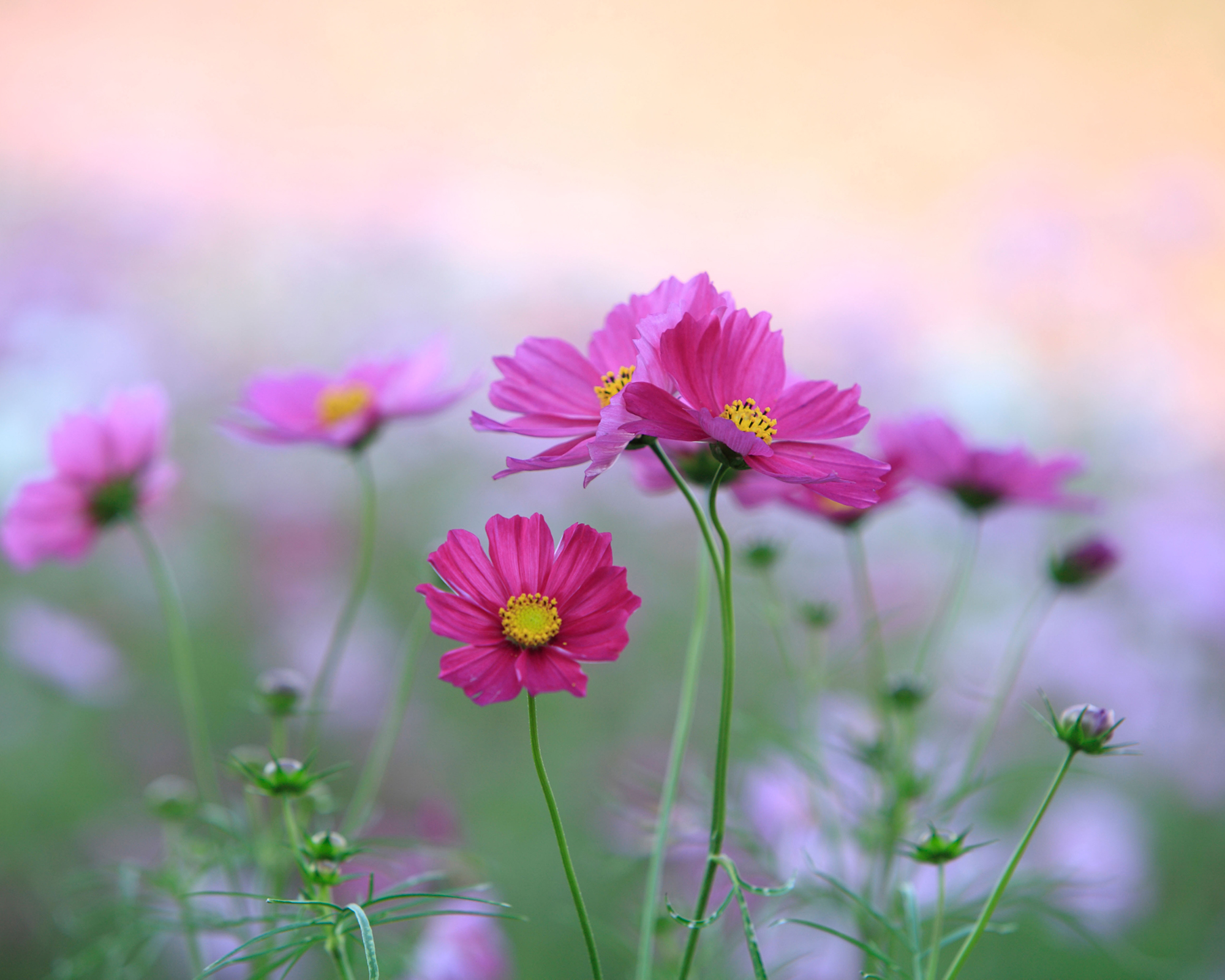
October
Beds and borders
Flowering perennials can be cut back in fall to help improve flowering the following year, although do leave some so wildlife have food over the winter months. Collect and store seed from seedheads to grow next year. Divide plants as needed and then give them a good mulch to help protect plants over winter and to suppress weeds. Bark chips, well rotted manure or leaf mold are all good to use.
If you planted nerine bulbs back in summer then they should be flowering now. Nerine 'Zeal Giant' has stunning cerise-pink flowers on tall stems from September to November.
For healthy dahlias next year, you can lift the plants now and overwinter them before planting out again after the last frosts. Lift dahlias after the first frosts, cutting back the stems. Then rinse off the soil from the tubers and pack them into a pot with dry compost before storing them in a dry shed or greenhouse.
Another option for what to plant in October is delphinium seeds, which can be sown now for blooms next June. Rake a patch in your flowerbed clear of weeds and debris and water the soil before sowing. Sprinkle the seeds thinly. Rake a layer of soil over the seeds and gently tamp it down.
Containers
Heading into the cooler months, summer bedding plants come to an end, but if you still want some seasonal interest, plants like winter heather are ideal. Keep pots raised up on pot feet over winter to prevent them sitting in water during winter. Any delicate potted plants, such as lemon trees, should be moved somewhere like a heated greenhouse or conservatory over winter.
For interest this month, Gaura 'Baby Butterfly Dark Pink' will provide a flourish of pink blooms to pots as they flower from June through to October. Now is also a good time to plant up winter bedding plants such as pansies, violas and primrose in pots and winter hanging baskets, which will give the garden interest right through the colder months.
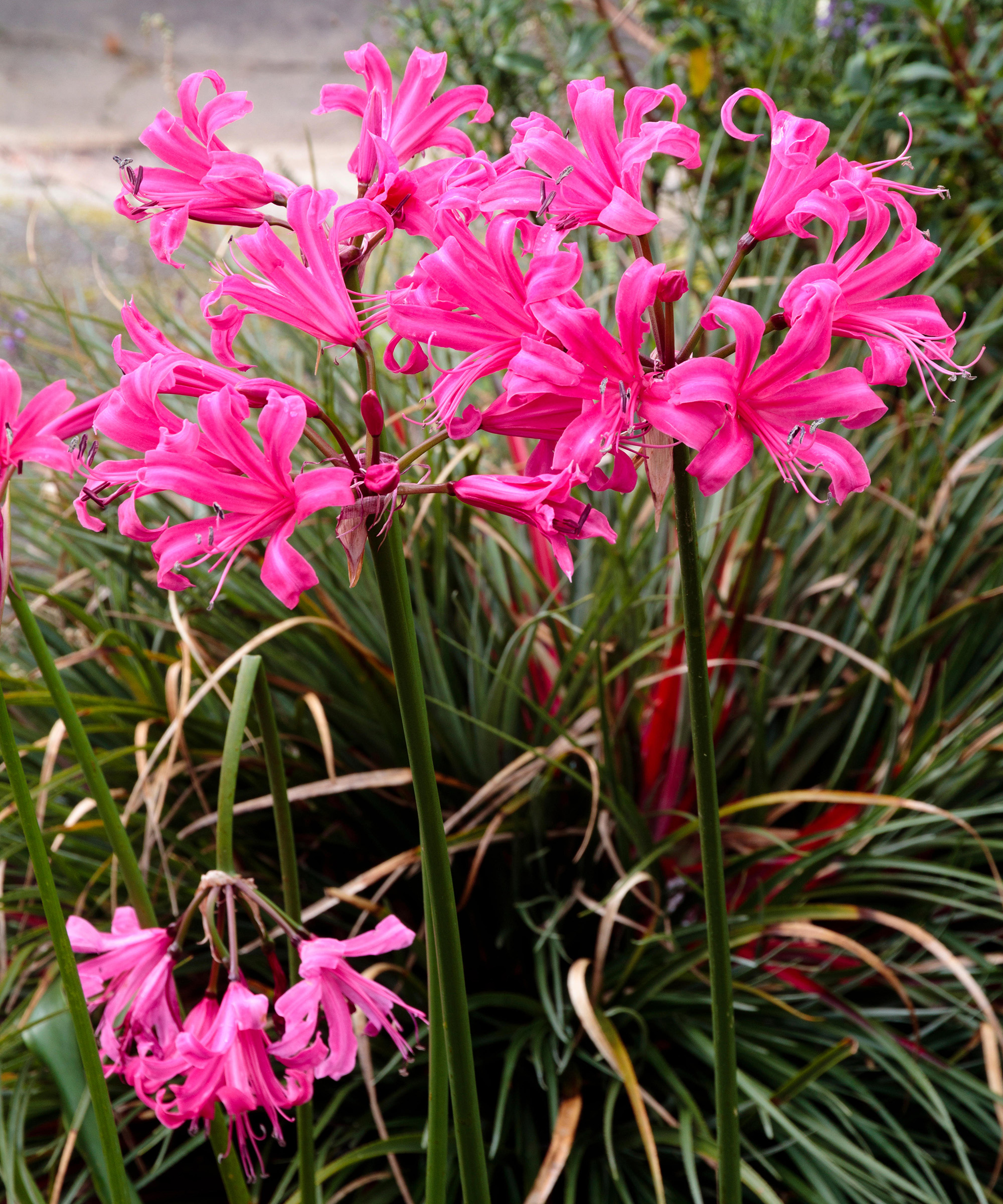
November
Beds and borders
Planting wallflowers will give a border a bright burst of color when many other plants have finished flowering. If you need holly with berries for your Christmas table or decorations, now is the time to clip pieces off before the birds feast on all the berries. Keep them in a bucket of water away from birds.
As well as what to plant in November, many herbaceous plants have now died back, so clearing borders of leaves and fallen branches is key. Continue to weed beds and mulch if you haven't already. November is also a good time to plant bare root roses to give them time to establish before coming into bloom in summer.
Containers
Plant spring bulb displays now and you will be rewarded with beautiful blooms come spring. Try some of favorite bulb lasagne ideas for a striking combination of bulbs in the same pot to give you a continuous flourish of flowers. Ensure pots have good drainage as tulips don't like very wet conditions.
Protect plants from frost by wrapping pots with bubble wrap or fleece. Leave chicken wire over the top to stop squirrels from stealing bulbs too.
For winter interest now, plant up pots with heuchera for their characterful leaves that change color through the year, or skimmia japonica 'Rubella' with its dark red flower buds that last through winter until they flower in spring.
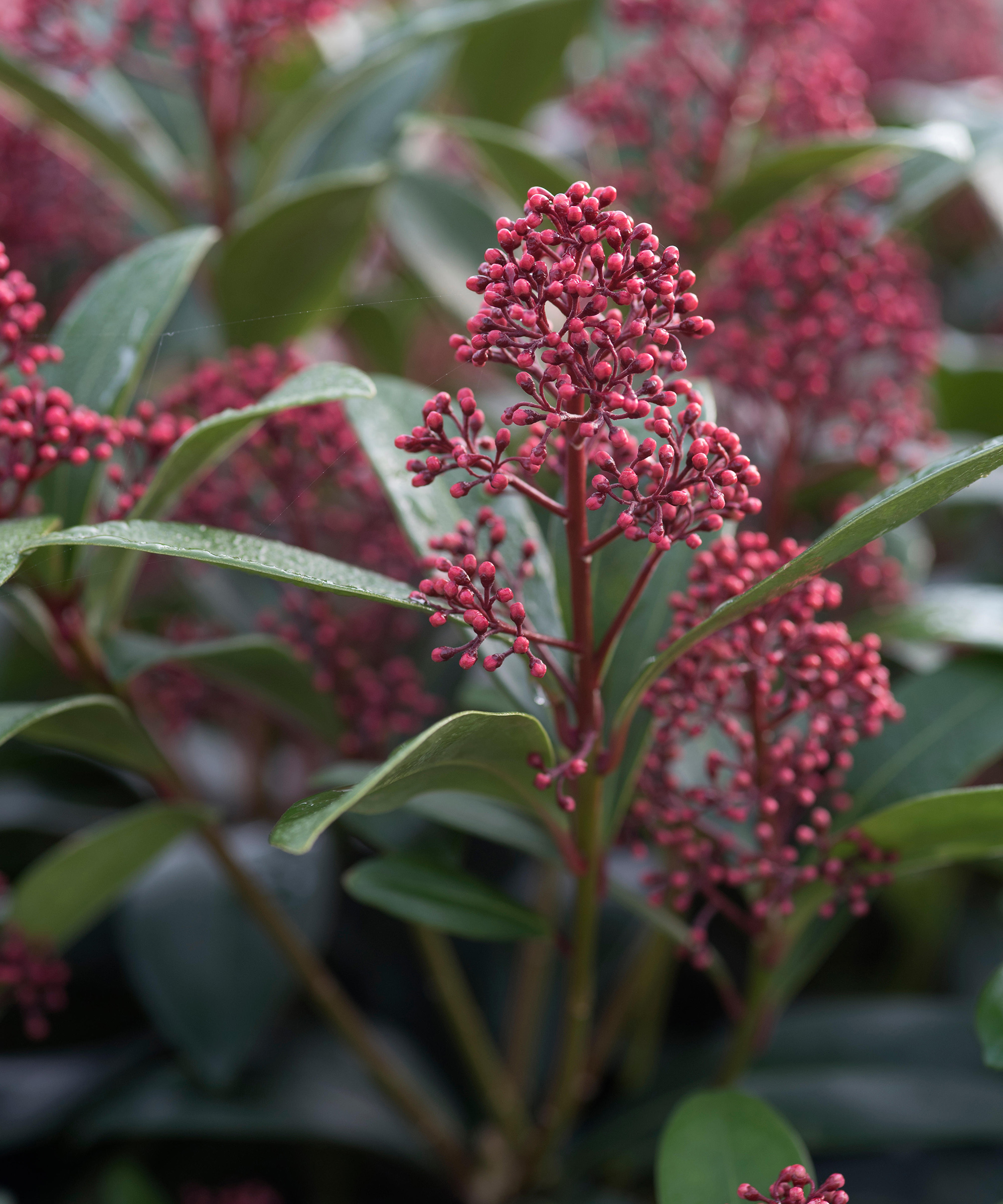
December
Beds and borders
Winter is the time to prune your best climbing roses. If you don’t prune them now you will end up with masses of twiggy growth and less blooms next year. Leave the main stems well alone and instead thin out the side shoots. Cut above a bud in the direction you want your rose to grow, then tie in the stems to the support when you’ve finished snipping.
Sowing flower seeds is a good option for what to plant in December as long as you have a heated propagator or warm windowsill. Try sowing sweet peas indoors, using cardboard loo rolls so they can easily be transferred to the garden once the weather warms up. When your seedlings are around 10cm tall pinch out the growing tips to encourage them to bush up.
Some hellebores will be blooming now and striking foliage plants like heuchera and hedera will be giving winter interest in pots and borders.
Containers
Fill winter pots generously as plants grow more slowly during the colder months and you don't want any obvious gaps. Once planted up, put the pots where they will get the most light. Regularly check the compost for signs of drying out, and be careful not to overwater them.
Add blazing color to your container with the winter stems of a cornus (dogwoods). They are at their most striking in the winter months, when the stems take on fiery shades.
All winter containers should have drainage to prevent roots getting sodden. Use plenty of crocks or broken up polystyrene plant trays. If possible, also raise the pot on feet or bricks for increased drainage and to avoid frost damage.
Group all your container plants in the most sheltered spot in the garden. Clustering them together will help to protect to protect plants from snow, harsh weather and damaging high winds.
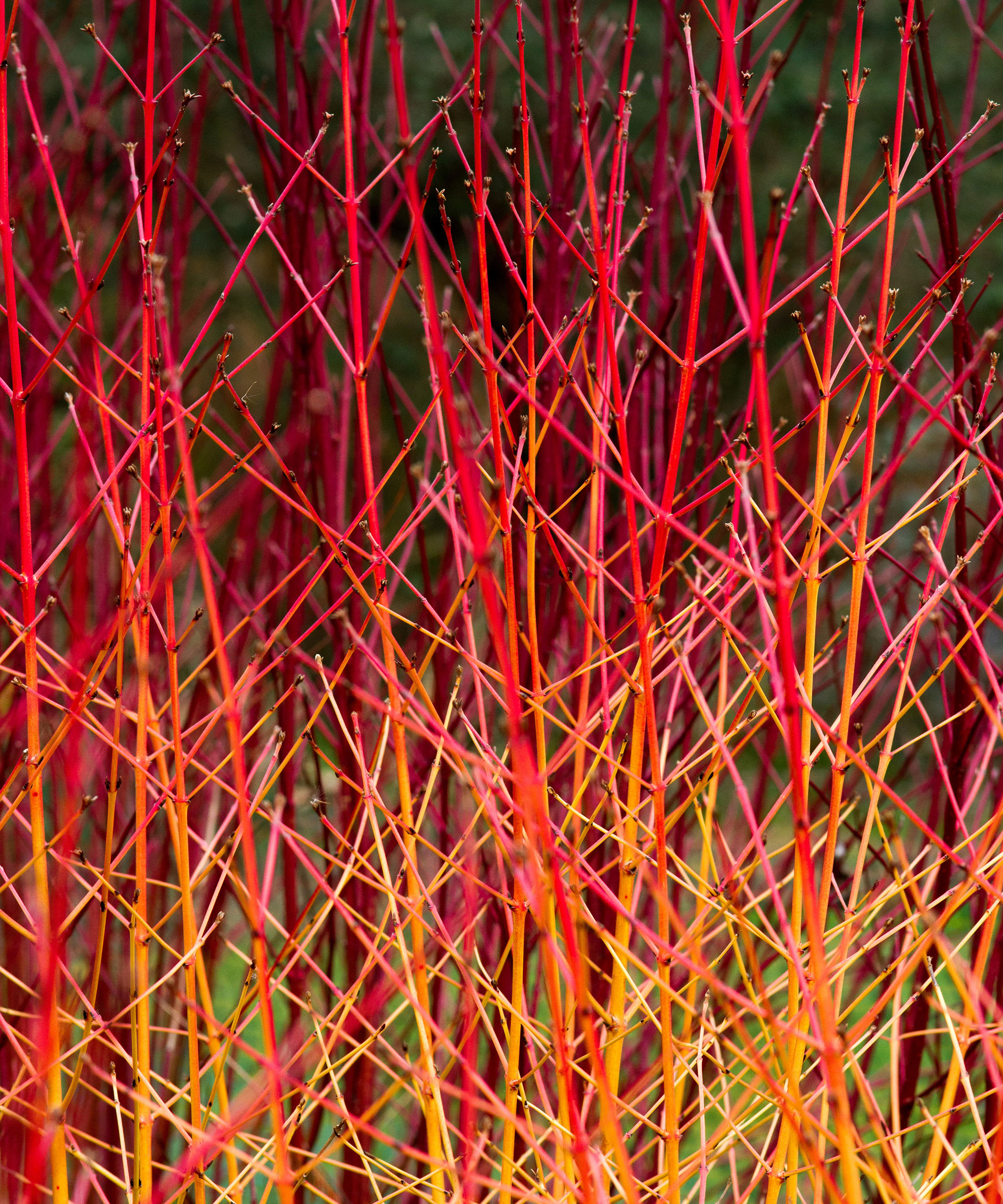
What can I start planting right now?
The rule of thumb for what to plant when will depend on whether you are growing from seed, bulbs, bare root or opting for ready-grown varieties.
The general rule for bulbs is that you plant them the season or so before they're due to flower. For example, early spring bulbs, such as snowdrops and daffodils are planted in autumn, late flowerers like tulips are planted in November i.e. winter. Then summer bulbs should go in the soil in spring. Finally autumn bulbs in summer.
How to grow flowers from seeds is more complicated. Hardy annuals, such as poppies, cornflowers and calendulas, can be sown directly in soil in spring for flowers the same year in the summer months.
If growing other flowers from seed the time of year will vary depending on if you're starting them off inside or sowing direct. So the fail safe of knowing what to plant when is to check specific details on seed packets, or follow the advice on the plant label.

Teresa has worked as an Editor on a number of gardening magazines for three years now. So she is lucky enough to see and write about gardening across all sizes, budgets and abilities. She recently moved into her first home and the garden is a real project! Currently she is relishing planning her own design and planting schemes. What she is most passionate about when it comes to gardening are the positive effects it has on our mental health to grow and care for plants, as well as being great for the environment too and help provide food and shelter for wildlife.
